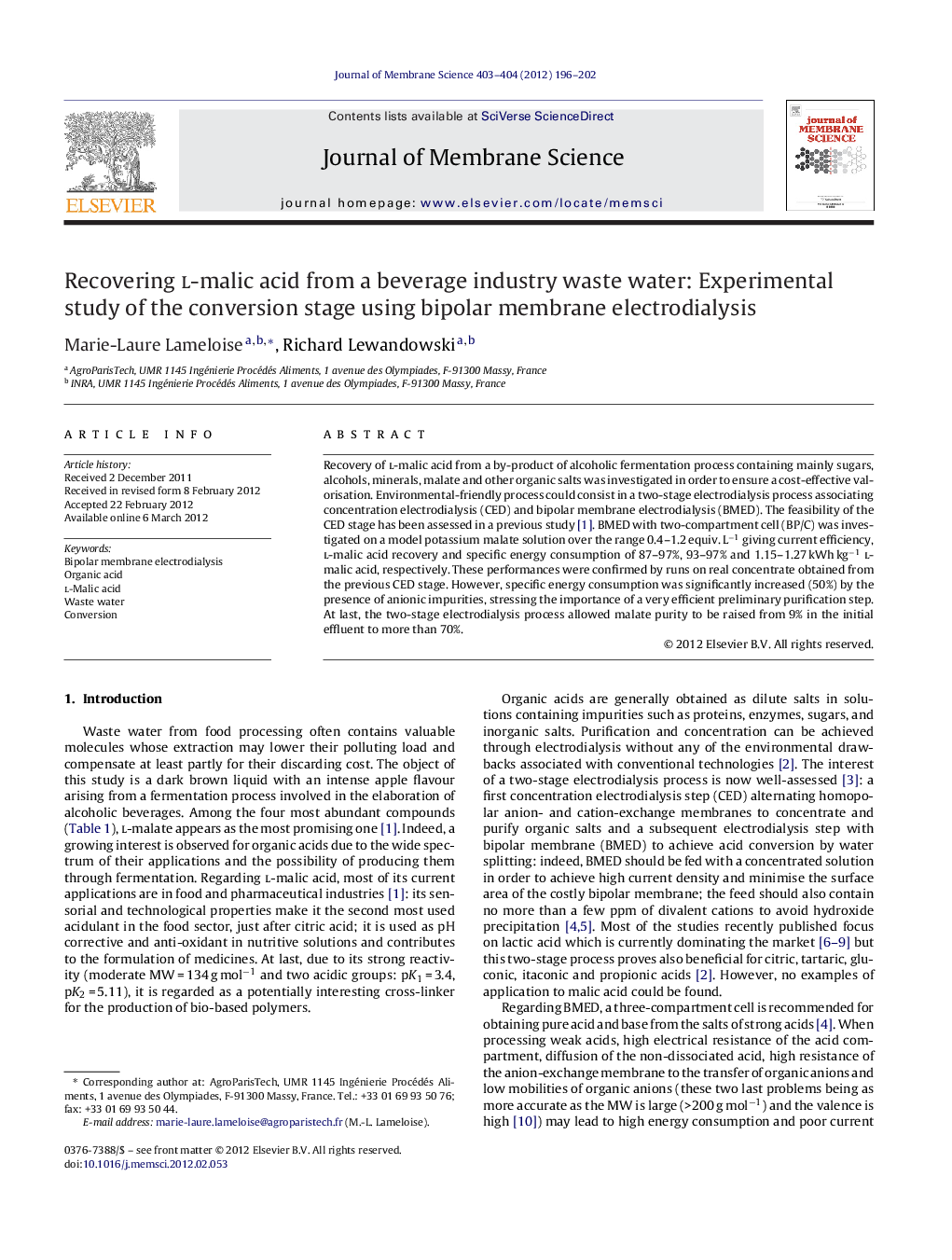| Article ID | Journal | Published Year | Pages | File Type |
|---|---|---|---|---|
| 635044 | Journal of Membrane Science | 2012 | 7 Pages |
Recovery of l-malic acid from a by-product of alcoholic fermentation process containing mainly sugars, alcohols, minerals, malate and other organic salts was investigated in order to ensure a cost-effective valorisation. Environmental-friendly process could consist in a two-stage electrodialysis process associating concentration electrodialysis (CED) and bipolar membrane electrodialysis (BMED). The feasibility of the CED stage has been assessed in a previous study [1]. BMED with two-compartment cell (BP/C) was investigated on a model potassium malate solution over the range 0.4–1.2 equiv. L−1 giving current efficiency, l-malic acid recovery and specific energy consumption of 87–97%, 93–97% and 1.15–1.27 kWh kg−1l-malic acid, respectively. These performances were confirmed by runs on real concentrate obtained from the previous CED stage. However, specific energy consumption was significantly increased (50%) by the presence of anionic impurities, stressing the importance of a very efficient preliminary purification step. At last, the two-stage electrodialysis process allowed malate purity to be raised from 9% in the initial effluent to more than 70%.
► Two-compartment bipolar electrodialysis (BP/C) is effective to recover l-malic acid. ► Process performances are not affected by malate concentration in the range studied. ► High acid recovery and current efficiency (95%) are obtained on real solution. ► For real solution, specific energy consumption is 50% higher than for the model one.
